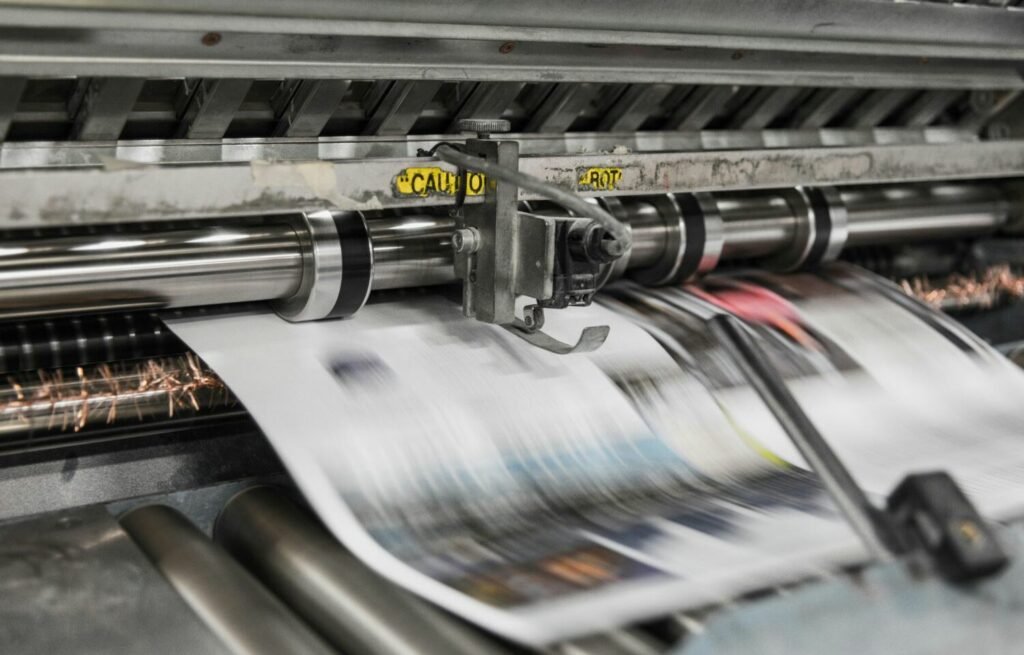Every year, more than 20 million Nigerians take state and national exams, including BECE, WAEC, NECO, JAMB, and numerous internal school assessments. These exams demand vast quantities of printed paper, delivered to hundreds of examination centres across the country. What few stop to consider, however, is the hidden carbon cost of exam paper printing in Nigeria—and how a roadmap to digital proctoring could dramatically cut carbon emissions, reduce costs, and modernise the system.
Paper-based testing is deeply entrenched in Nigeria’s education culture; the smell of freshly printed booklets, the logistical rigour of transporting them, and the spectacle of massive exam halls are familiar to many. But beyond the classroom and exam hall lies a shadow: deforestation to produce paper, carbon emissions from printing and transport, and waste disposal challenges. As climate change intensifies, it’s time to reckon with the environmental footprint of our exam rituals—and propose a digital proctoring alternative that is both feasible and sustainable for Nigeria.
Table of Contents

Calculating the Carbon Toll of Printed Exams
At first glance, printing seems benign. But scaled to 20 million papers (or more) per cycle, the environmental cost becomes glaring.
From pulp to problem: Paper production and emissions
Paper is usually derived from wood pulp. Each ream, each bundle, requires trees, energy, and water. Globally, producing one metric ton of paper emits roughly 2 metric tons of CO₂ equivalent. When Nigeria’s exam system uses hundreds of millions of sheets annually, those emissions accumulate fast.
Add to that the energy consumed by printing presses, the carbon in ink production and disposal, and the transport fuel used to deliver millions of exam booklets across Nigeria’s vast terrain—and the total becomes far from negligible.
Transportation, delivery and logistics
Many exam centres are rural, in remote areas of states like Taraba, Gombe, Cross River, and deep interior communities. Trucks, vans and sometimes motorcycles carry heavy loads of exam paper across challenging roads. Each trip adds CO₂ emissions from diesel burning. Multiply that across all states and exam cycles, and the carbon bill rises steeply.
Waste and recycling
After exams, wasted or damaged booklets often end up shredded or landfilled. Even recycling is not universal in Nigeria, and the carbon cost of collection, transport, and reprocessing further drives up emissions. Most paper waste decays or is incinerated, releasing greenhouse gases.
In sum, the carbon cost of exam paper printing in Nigeria is invisible to everyday eyes—but bureaucrats, policymakers, and climate watchers should not ignore it.
A Roadmap to Digital Proctoring in Nigeria
Moving from printed exams to digital proctoring is not just a tech fad—it offers a realistic and environmentally responsible alternative. But it must be thoughtfully planned, tailored to Nigeria’s infrastructure, and inclusive. Below is a possible roadmap for making that shift in Nigeria’s exam ecosystem.
Step 1: Pilot programmes and infrastructure audit
Begin with pilot projects in a few states or institutions (say in Lagos, Kaduna, Enugu) to test digital exams in selected subjects. Meanwhile, audit power and internet infrastructure across exam centres nationwide: how many have reliable power? How many have stable broadband? Where are the gaps?
Nigeria already has pockets of good digital infrastructure in urban and semi-urban areas. These can be centres for initial rollout, while the government partners with telecoms and power providers to extend access in underserved places.
Step 2: Device deployment and digital exam platforms
Once pilot zones are identified, distribute or partner for devices (laptops, tablets, secured exam kiosks) to students or exam centres. Build or procure a robust digital exam platform with features like question randomisation, time monitoring, camera and screen capture (for proctoring), and secure access controls.
Security is key: the system must guard against cheating, impersonation, and data leaks. Also, the platform should be lightweight, able to run under limited bandwidth, and resilient to power fluctuations.
Step 3: Training and stakeholder buy-in
Teachers, examiners, invigilators and IT technicians must undergo training. Stakeholders—parents, students, state exam boards—must be sensitised to trust the digital mode. Transparent communication is crucial. Invest in user manuals, hands-on sessions, and mock exams so everyone becomes comfortable with the new system.
Step 4: Gradual scale-up and hybrid models
Digital proctoring does not have to replace paper overnight. A hybrid model—some exams digital, some paper-based—can bridge the gap. Over two to three years, expand the digital coverage gradually to more states and exam types. Collect data on device failures, internet outages, cheating incidents, and user satisfaction. Use that to refine and improve the system.
Step 5: Full migration and sustainability
After the pilots and scale-up phases yield success metrics—lower carbon footprint, cost savings, user satisfaction—the education authorities can aim for full migration. At that point, most exams should run digitally across Nigeria’s 774 local government areas. Ongoing maintenance, server hosting, and cybersecurity must be budgeted continuously.
Alongside, incentivise renewable energy installations (solar backup) in rural exam centres, and partner with telecom firms to ensure bandwidth equity. In time, Nigeria can leapfrog traditional exam culture into a greener, future-ready system.

Benefits, Challenges & Policy Imperatives
Transitioning to digital proctoring is not without hurdles. But the upside—environmental, financial, educational—is compelling. Here’s a balanced look at prospects and caveats.
Benefits: greener, cheaper, faster
- Carbon emission reduction: By eliminating millions of printed sheets, transport and waste processes, Nigeria could reduce hundreds of thousands of tons of CO₂ annually.
- Cost savings: Printing and logistics consume large budgets. Digital exams reduce long-term costs—paper, ink, transport, storage, and security.
- Speed and efficiency: Instant grading, automated analytics, and faster exam turnaround times.
- Scalability and adaptability: Digital exams can scale for more varied formats (multimedia questions, simulations) and be more resilient to disruptions (e.g. pandemics).
- Data insights: You gain richer data on student performance, question difficulty, and exam integrity.
Challenges to overcome
- Power and internet constraints: Many rural and remote centres lack stable electricity or decent bandwidth. Without bridging this gap, digital proctoring may exacerbate inequities.
- Device availability and maintenance: Procuring, deploying, and repairing devices across remote regions is logistically challenging.
- Digital literacy and trust: Students, teachers, and invigilators may resist or distrust digital exams.
- Security and fairness: Ensuring exam integrity in the digital space is a top concern. Hackers, impersonation, or software glitches could undermine confidence.
- Upfront cost and investment: Though savings accrue later, the initial outlay on infrastructure, software and training is significant.
- Policy and regulatory framework: Data protection, privacy, cyber laws, and educational regulations must evolve to support digital exams.
Policy imperatives and recommendations
- National exam digital strategy: Federal and state governments must craft and adopt a long-term blueprint for digital proctoring.
- Public–private partnership (PPP): Collaborate with telecoms, power firms, tech vendors, and NGOs to expand connectivity and backup power in underserved areas.
- Phased funding models: Use pilot funding, donor support, and incremental budget allocations for the transition.
- Legal and regulatory reforms: Strengthen data privacy laws, cybersecurity norms, and regulatory frameworks to govern digital assessment.
- Equity assurance: Ensure that underprivileged and rural students are not left behind—deploy subsidised devices, improve broadband, and maintain fallback options.
- Continuous evaluation and transparency: Publish impact assessments, environmental savings, costs, user feedback and incident reports to build trust and improve the system iteratively.

Conclusion: Cutting the Carbon Burden
Transitioning Nigeria’s exam system to digital proctoring is not just a technology upgrade—it’s an opportunity to rethink education, climate responsibility and accessibility. The carbon cost of exam paper printing in Nigeria is a hidden burden, borne quietly by forests, the climate and future generations. By adopting a smart roadmap, Nigeria can transform its examination culture, reduce emissions, increase efficiency, and set an example among emerging economies.
Join Our Social Media Channels:
WhatsApp: NaijaEyes
Facebook: NaijaEyes
Twitter: NaijaEyes
Instagram: NaijaEyes
TikTok: NaijaEyes





